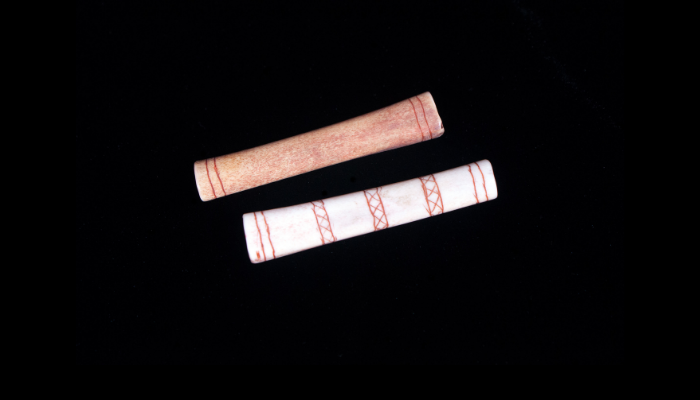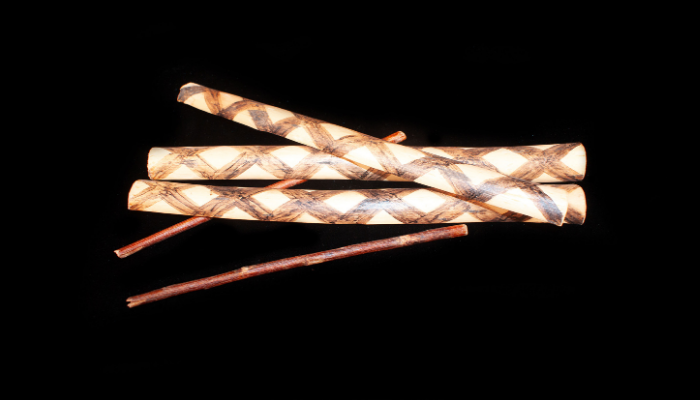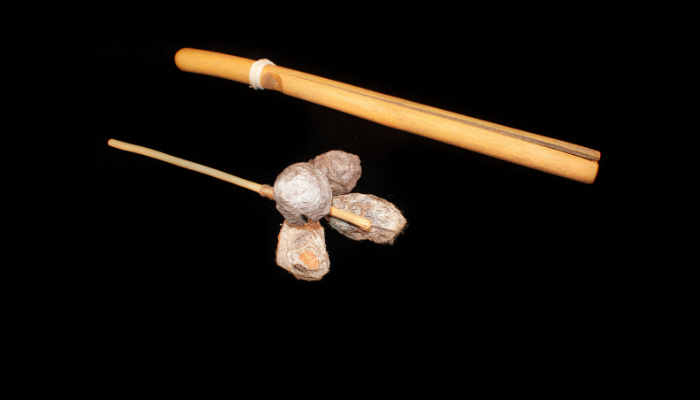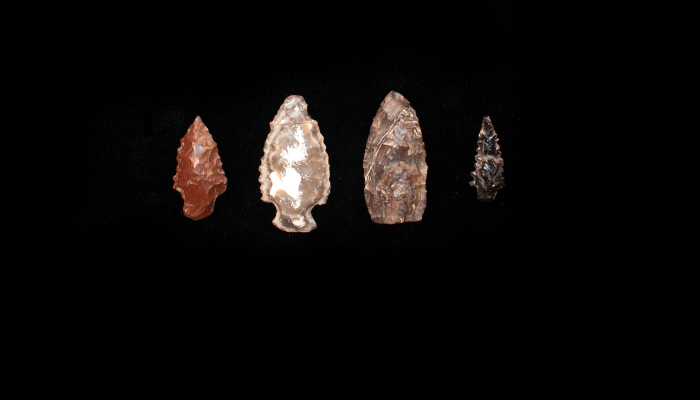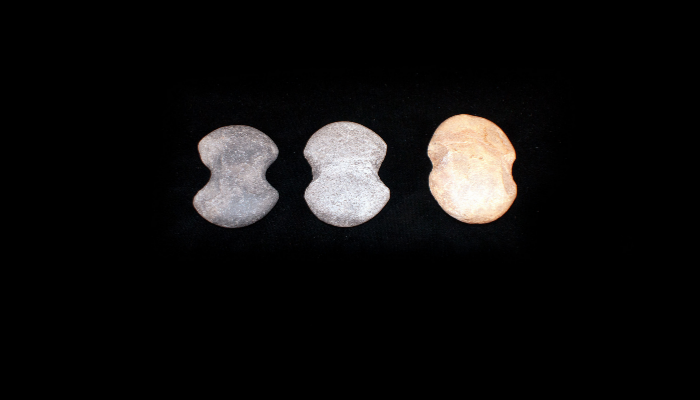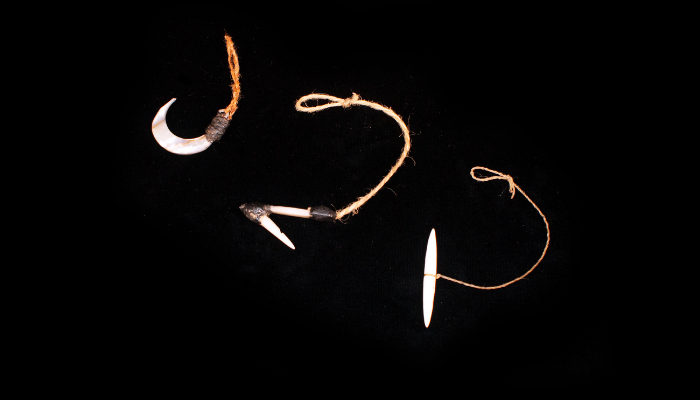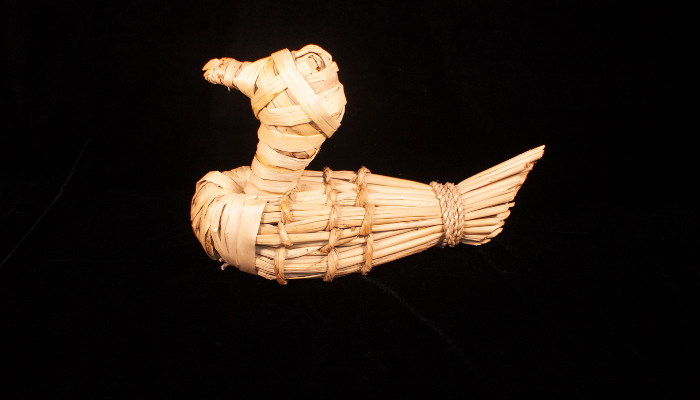People have lived in the Santa Cruz region for more than 10,000 years — since mammoths and mastodons roamed the land. In fact, one of the oldest known village sites in California is in nearby Scotts Valley. Today, as in the past, the environment of Santa Cruz offers a wealth of natural resources to support human life.
Please Note:
Recent changes in federal law require museums to have explicit permission to display Indigenous cultural objects. The Museum applauds this change, and has been working towards outreach to the different communities historically represented by our displays. The items that remain on display in our physical and online exhibit are either reproductions, or are local materials that we display with permission and consultation from the Amah Mutsun Tribal Band.
Many Languages and Dialects
Tribes living along the coast between San Francisco and Point Sur, and as far inland as the Central Valley, belong to the “Ohlone” language family — a term coined by anthropologists that includes at least eight languages and many additional dialects. The Indigenous people of Santa Cruz spoke the Awaswas language.
Today, many people use the term Ohlone to describe the cultures of the people along the Central Coast of California. Whenever possible, we will attribute artifacts and knowledge to their specific origins, recognizing that Indigenous culture is by no means homogeneous.
Santa Cruz was called Aulinta in the Indian tongue. I will give you some words in their language: mancharas, women; ketchkema, boy; ciui, girl; atchsema, wife; housen, husband; maco, knife; chipay, ax; hatis, arrows; temo, bow; liti, come here; hai, sick; ena, dead; esu, hand; coro, feet; uir, head; hein, eyes; ochi, ear; uss, nose; hais, beard; summup, eyebrow; siit, teeth.
Lorenzo Asisara
Born at Mission Santa Cruz, 1819
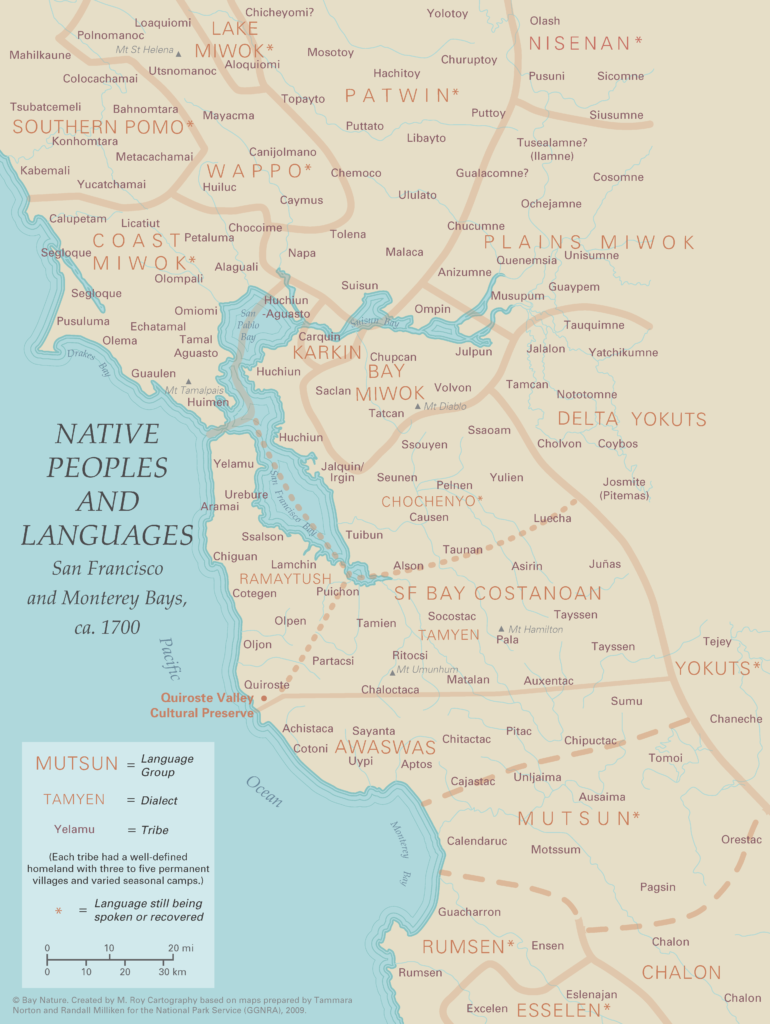
Learn more: Download the Mutsun-English English-Mutsun Dictionary.
To explore the Awaswas language, purchase a copy of A Gathering of Voices: The Native Peoples of the Central Coast, 2002.
California Indians and Baskets
Diverse groups, cultures, and languages have long lived in California. Baskets are important in many of these cultures and show diversity in style, design and function.
Native women were and still are accomplished basket makers. From an early age, girls learned where and when to collect the plants, how to tend the plants, and how to prepare them for weaving into many types of baskets. How do you use baskets?
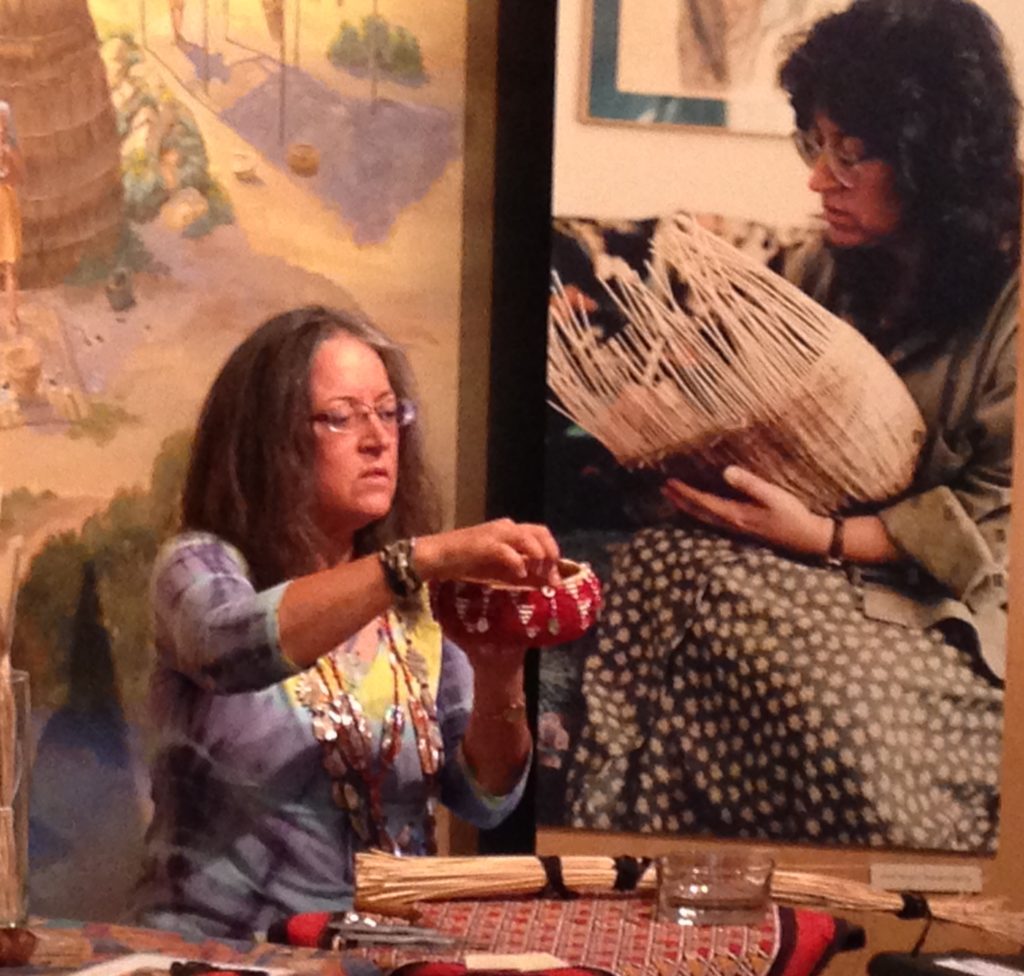
I’ve been working for several years trying to find out about our baskets — what they looked like, where they are, what materials were used. There are so few Ohlone baskets left that it’s been quite a job learning these things, but little by little, the pieces have been coming together. With the help of friends who helped me learn how to gather and prepare the materials, I was eventually able to begin weaving — the first Ohlone basket to be made in nearly a hundred years!
Linda Yamane, Rumsien Ohlone
EXPLORE OUR COLLECTIONS:
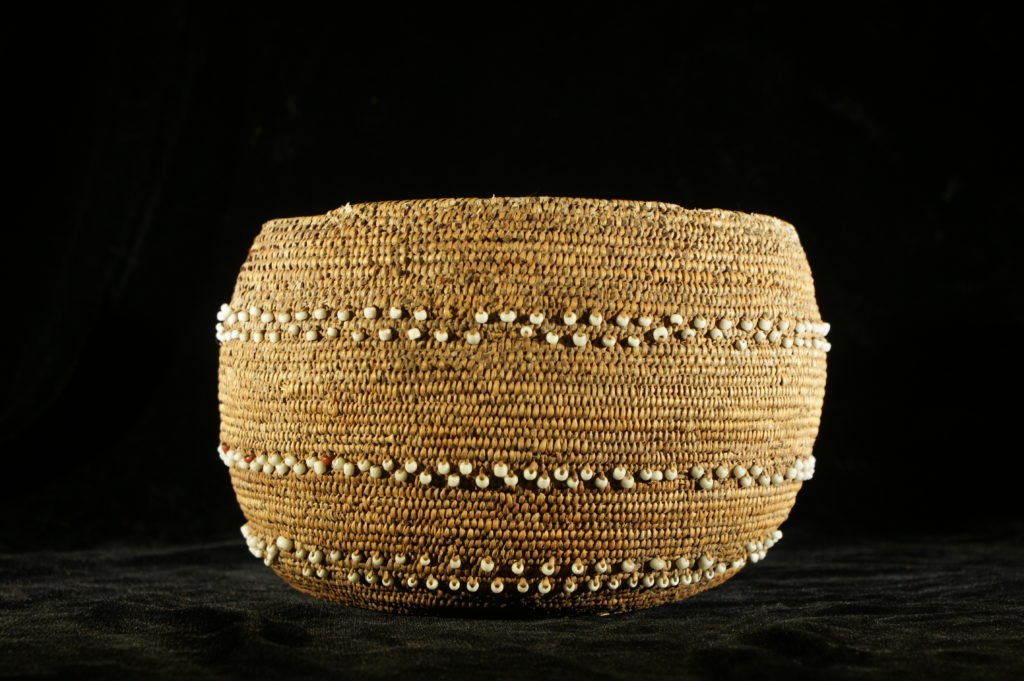
Read more: Exploring our Ohlone basket’s history.
Read more: Exploring made-for-sale baskets in our Collection
Tending the Landscape
Tending to nature is an important aspect of Native culture. Not only is managing resources vital for survival, but it is also central to spiritual and cultural practices. Before contact with Spaniards, California Natives actively tended the landscape to meet their needs. They also followed the seasonal cycles of the natural world around them.
What times of the year do you think they would gather acorns? Fresh greens? Berries?
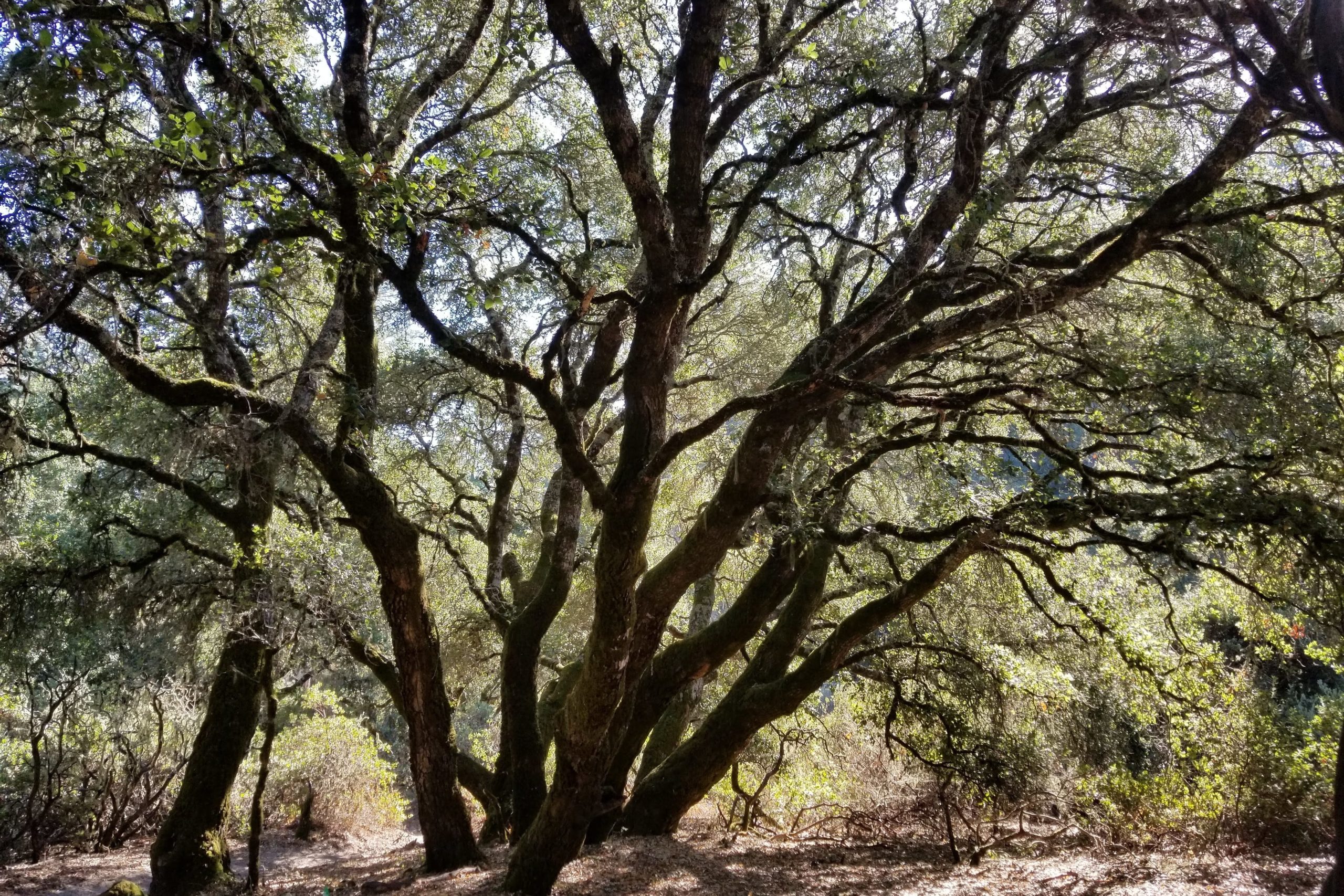
Making Acorn Mush and Bread
Acorns were used for soups or breads, but required careful processing to remove tannic acid in their pulp. After grinding and sifting, the resulting flour had to be rinsed with water in a leaf-lined sand basin or specialized basket.
Acorns were a staple food for people throughout California, including the Awaswas-speaking people of Santa Cruz. Each fall they were collected and stored for year-round use in granaries that kept them dry and safe from pests.
They had acorns to eat which they ground in stone mortars, called urswan. The pestle was called packshan. To cook the acorn after being ground, the mass was put into large baskets, which were made watertight, being woven with grass roots of a kind very long and tough. Into these were put hot stones, which caused the water to boil, and so the meal was cooked.
Lorenzo Asisara, Born at Mission Santa Cruz, 1819
Read more: Explore the mortars and matates in our collection.
Nature’s Bounty
Consider the things that all humans need to survive. Native people were able to survive and thrive because of the abundance of this region and their expertise in engaging with it. Villages were usually located near fresh water and seasonal food sources, and tribes would often move to different sites throughout the year.
What do you notice in the mural below? What are the people doing? What materials are they using?
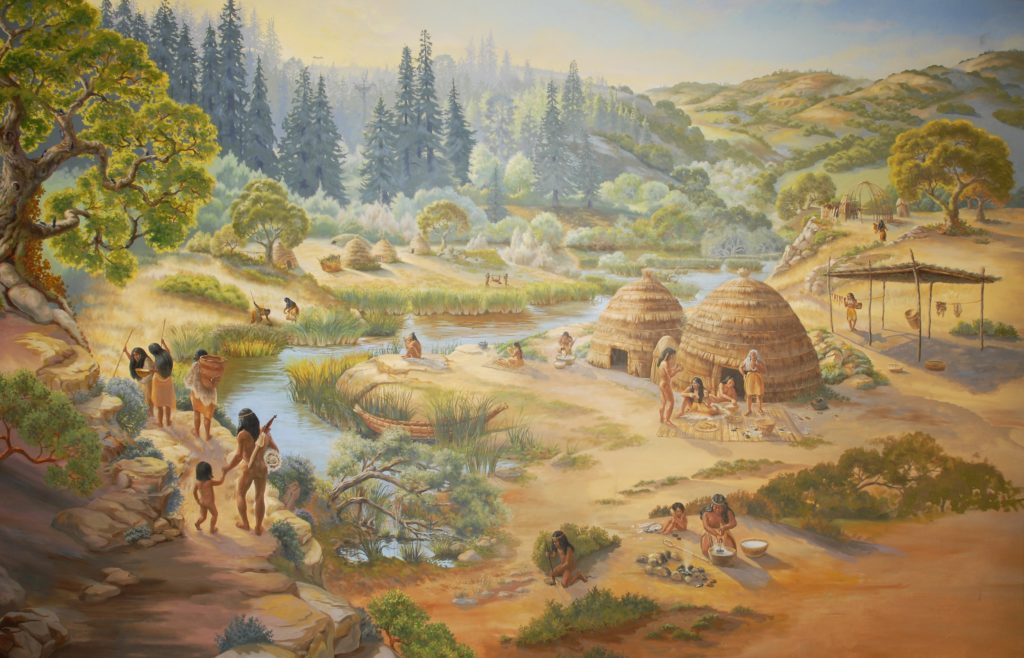
Oral Traditions
Cultural teachings and significant knowledge about flora, fauna, and natural cycles of life along the coast are passed down over generations through oral traditions.
The Right Materials
Native people in this region cultivated and utilized plants with a deep knowledge of their needs and traits. Plants were specifically tended for use in basketry, building, food, medicine, and religious ceremonies.
Learn more: Native Plants and Their Uses Guide (PDF | HTML)
Rich in Resources
Natural resources were used for more than survival – they served a purpose in ceremony, currency, expression, recreation, and daily household needs.
Where do you get the materials and items you need for your own recreation?
EXPLORE OUR COLLECTIONS:
TAP ARROWS TO VIEW MORE OBJECTS
Hunting
Hunting provided the community with many resources in addition to food. These resources were used for clothing, tools, crafting, and ceremony.
What role do animals play in our lives?
Tools
Tools such as bone and shell hooks, traps, nets, and decoys were used to hunt a variety of game. Resources to create these tools were carefully cultivated or traded for, as in the case of chert, and later obsidian, for arrow and spear points.
Bows and Arrows
Bows were made from flexible and strong wood, reinforced by sinew. Several types of trees were carefully tended with fire and pruning to encourage the growth of straight branches for arrows. Hunters used spears, which were later replaced by more accurate bows and arrows.
EXPLORE OUR COLLECTIONS:
TAP ARROWS TO VIEW MORE OBJECTS
The Amah Mutsun Tribal Band
Traditional stewardship of natural and cultural resources was brutally disrupted by the establishment of the Spanish Missions in the late 18th century, followed by Mexican ranchos, and as California became a state in 1850. This was devastating to the Native people and the landscapes they tended.
Today, the Amah Mutsun Tribal Band is comprised of the descendants of the indigenous people taken to missions San Juan Bautista and Santa Cruz.
Despite three continuous periods of colonization, the Amah Mutsun Tribal Band are now committed to restoring traditional knowledge, celebrating their heritage, honoring their Creator and protecting their ancestral homeland. In 2014 the tribe established the Amah Mutsun Land Trust to serve as a vehicle for the tribe’s return to their ancestral land and stewardship.
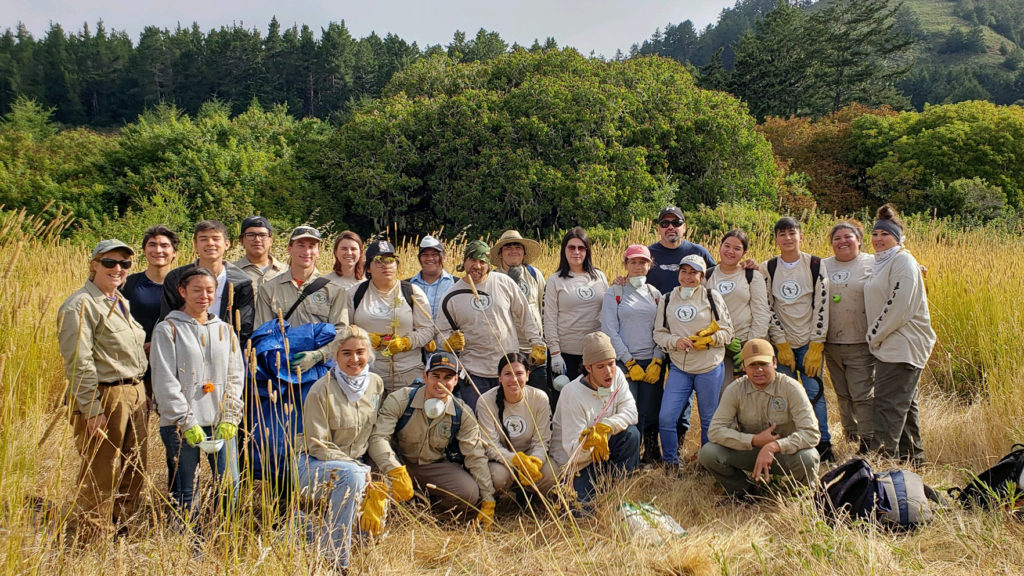
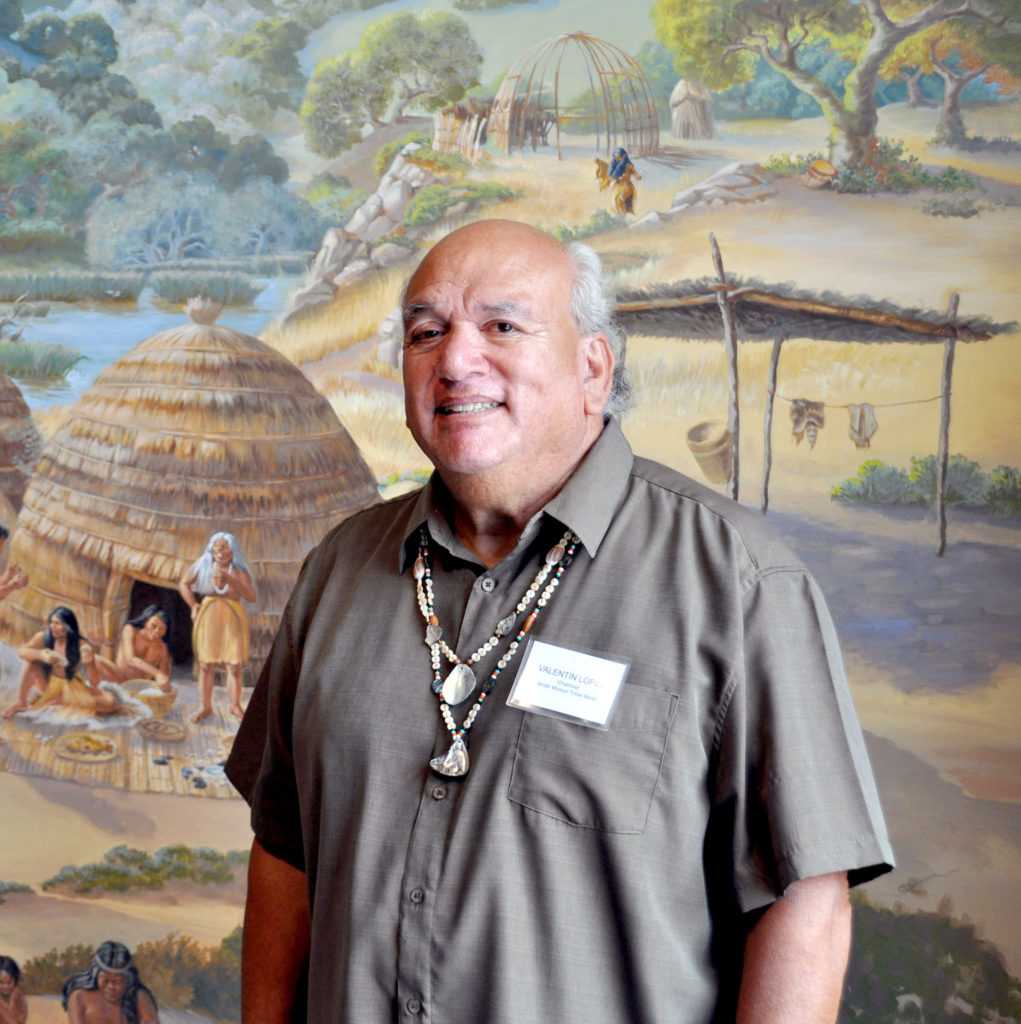
The Amah Mutsun never surrendered or signed away our rights to our land, water, or other resources. In 2006 Tribal Elders reminded Tribal Council that our creation story tells us us we must take care of Mother Earth and all living things. Since that time, our tribe has worked hard to return to the path of our ancestors. It is our responsibility to complete their journey, which was brutally disrupted by colonization. This is necessary because we must honor our ancestors and fulfill our obligation to Creator.
Valentin Lopez, Chairman of Amah Mutsun Tribal Band
Native California Tools Kit
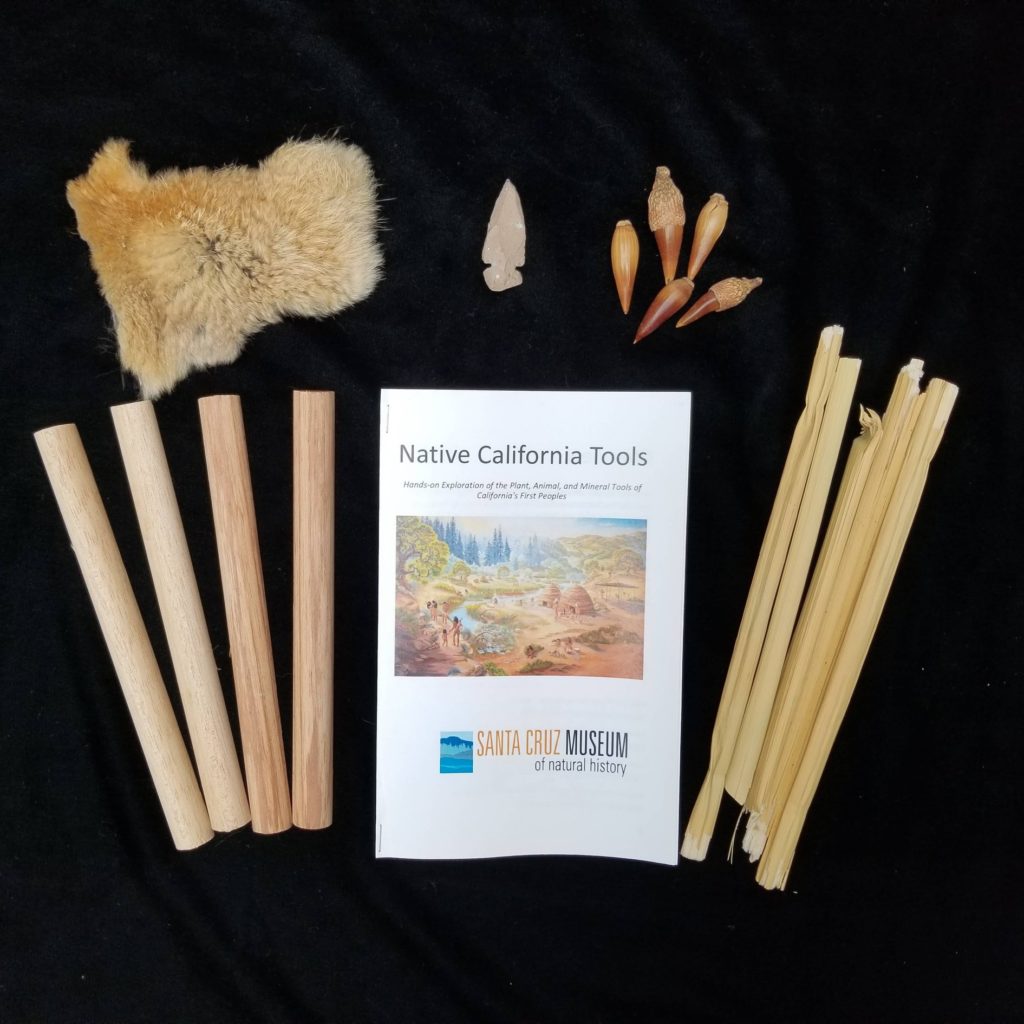
Supplement your at-home lessons with this collection of hands-on tools related to Indigenous connections to nature. Each kit contains the following items for tactile learning:
-Tule Reed Samples
-A stone point, either jasper or obsidian
-Acorns (5)
-A square of rabbit pelt
-Stave game materials
-Information Booklet
Purchase a kit today in our Online Museum Store.
Resources for Learning More
The following list contains websites and resources that the Museum has found to be useful, accurate, and appropriate. Please note that web content is subject to change and the Museum is not responsible for the information found on the links.
MUSEUM LECTURES WITH THE AMAH MUTSUN TRIBAL BAND AND LAND TRUST
- Ancient Scorched Seeds and Indigenous Land Stewardship with Rob Cuthrell
- Amah Mutsun Fire Relationships with Lawrence Atencio and Marcela Luna
MUSEUM SUPPLEMENTS FOR LEARNING AT HOME
- First Peoples of Santa Cruz Lesson Sequences
- Ohlone Matching Game
- Visit the Native California section of our Online Store
- Rent an Ohlone Kit from our Education Department
- Native Plants and Their Uses Guide (PDF | HTML)
- Read blog posts about our basketry collection
- Purchase a Native California Tools Education Kit
RECOMMENDED READING
- A Gathering of Voices: The Native Peoples of the Central Coast, 2002
- Tending the Wild by Kat Anderson
- The Ohlone Way by Malcolm Margolin
- Braiding Sweetgrass by Robin Wall Kimmerer
- Rumsien Ohlone Stories by Linda Yamane
- Little Deer and the First Native American Flute by Al Striplen
- Life of the California Coast Nations by Bobbie Kalman
- When the Mission Bells Rang by Judith Scott
RECOMMENDED WEBSITES
- Amah Mutsun Tribal Band
- Protect Juristac Curricula | Curricula developed by the Amah Mutsun Tribal Band and partners
- Indigenous History of the Bay Area Videos | with CA State Park Archaeologist Mark Hylkema
- Martin Rizzo-Martinez, PhD | California State Parks as the Historian for the Santa Cruz District
- Primitive Ways | Online resource for native technologies, practices, and traditions including workshops, how-to guides, and replicas
- From California to London & Paris In Search of Ohlone Baskets | Blog from Linda Yamane
- Rekindling the Old Ways: The Amah Mutsun and the Recovery of Traditional Ecological Knowledge | Bay Nature magazine
- Ohlone, Coastanoan, or Awaswas: Correcting History’s Misnomers | Mobile Ranger
- Slash and Burn: Native Garden Tending |Mobile Ranger
- Awaswas Wart Remedy: Poison Oak | Mobile Ranger
Land Acknowledgement
The land on which the Museum exists is the traditional and unceded territory of the Awaswas-speaking Uypi Tribe. Today these lands are stewarded by the Amah Mutsun Tribal Band. The Amah Mutsun are working hard to fulfill their obligation to Creator to care for and steward Mother Earth and all living things through relearning efforts and the Amah Mutsun Land Trust.
Exhibit Acknowledgements
The Santa Cruz Museum of Natural History gratefully thanks the individuals and organizations who have contributed to the creation of this exhibit:
The Amah Mutsun Tribal Band | The Helen and Will Webster Foundation | Linda Yamane | Doug Petersen | Nikki Silva | Frank Perry | Dave Dye | Mark Techner | Charlie Miksicek | Ann Thiermann | Molly Roy


